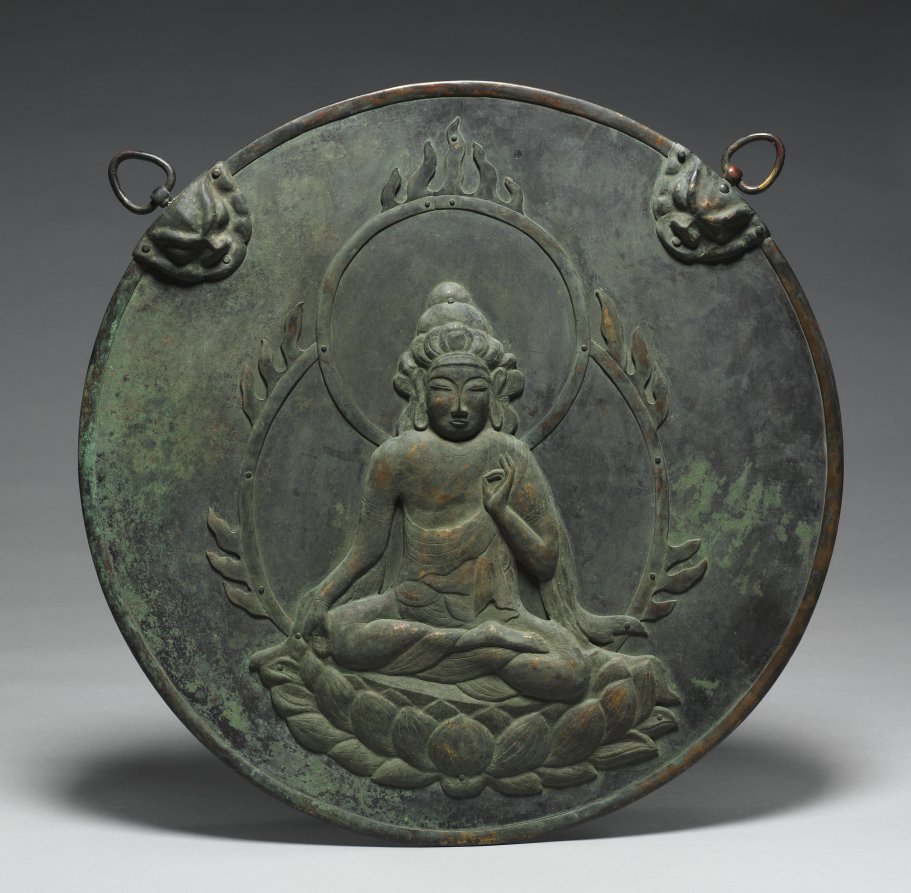| schema:description 11 | "creditline: Leonard C. Hanna, Jr. Fund" |
| schema:description | "type: Sculpture" |
| schema:description | "current_location: 235B Japanese" |
| schema:description | "tombstone: Votive Plaque with Image of Kannon, 1100-1185. Japan, Heian Period (794-1185). Bronze with repoussé and etching; diameter: 52.5 cm (20 11/16 in.). The Cleveland Museum of Art, Leonard C. Hanna, Jr. Fund 1985.16...(more)" |
| schema:description | "wall_description: A gilt repoussé image of the bodhisattva Kannon is fixed to a bronze disk with tiny nails. Kakebotoke (literally “hanging Buddhist deities”) like this appeared from the latter part of the Heian period. They often hung on the doors of a Shinto shrine hall to indicate the Buddhist manifestation of the god, or kami, inside, or along the eaves of a Buddhist temple hall to indicate the Buddhist deity celebrated there....(more)" |
| schema:description | "technique: Bronze with repoussé and etching" |
| schema:description | "digital_description: Kakebotoke (literally “hanging Buddhist deities”) like this appeared from the latter part of the Heian period. They often hung on the doors of a Shinto shrine hall to indicate the Buddhist manifestation of the god, or kami, inside, or along the eaves of a Buddhist temple hall to indicate the Buddhist deity celebrated there....(more)" |
| schema:description | "id: 152281" |
| schema:description | "culture: Japan, Heian Period (794-1185)" |
| schema:description | "measurements: Diameter: 52.5 cm (20 11/16 in.)" |
| schema:description | "collection: Japanese Art" |

